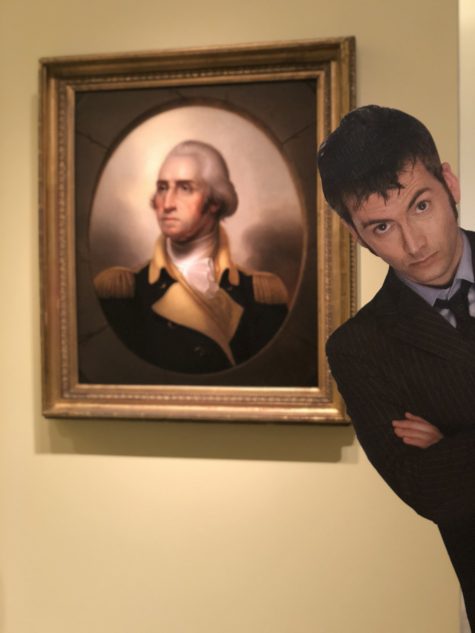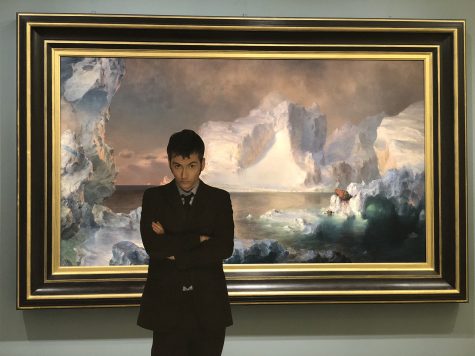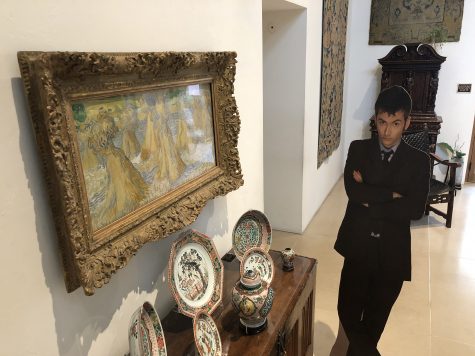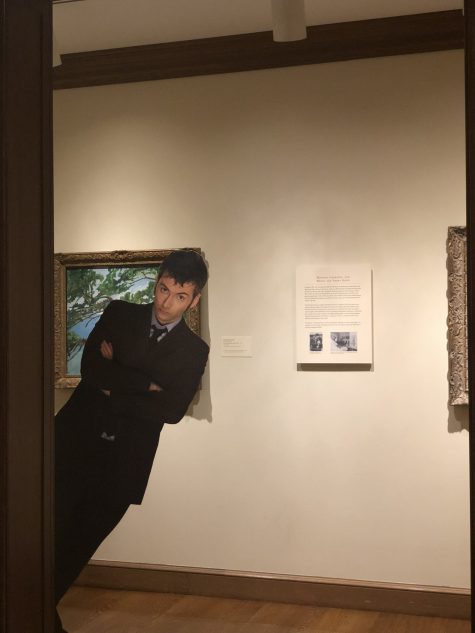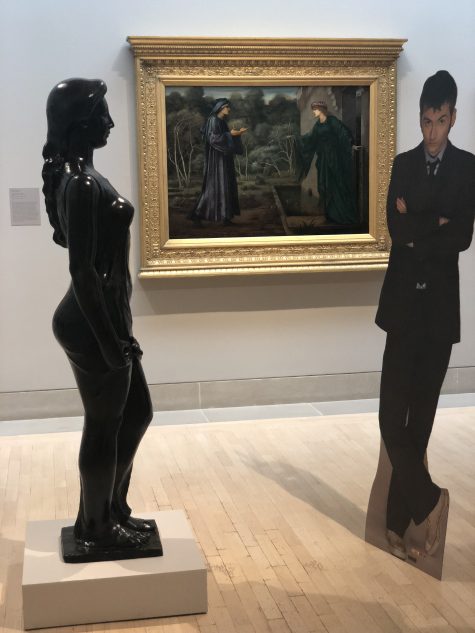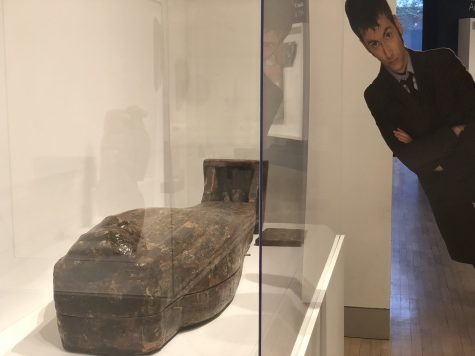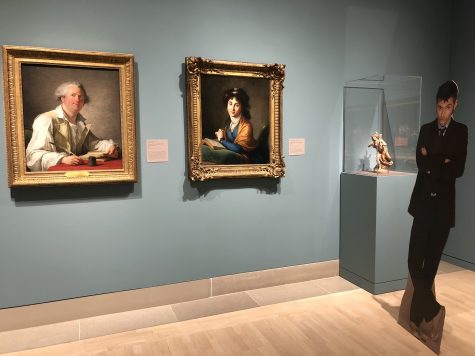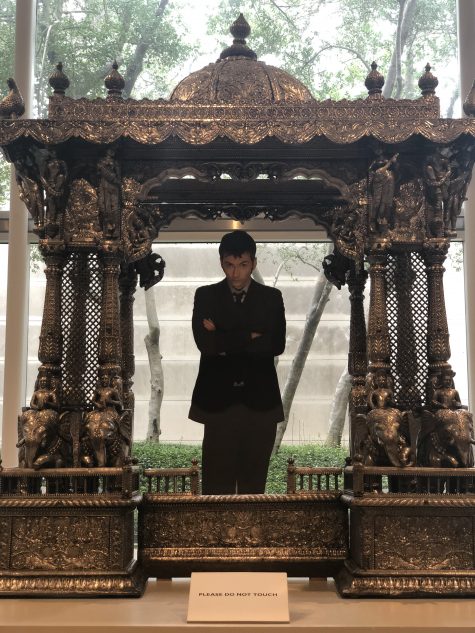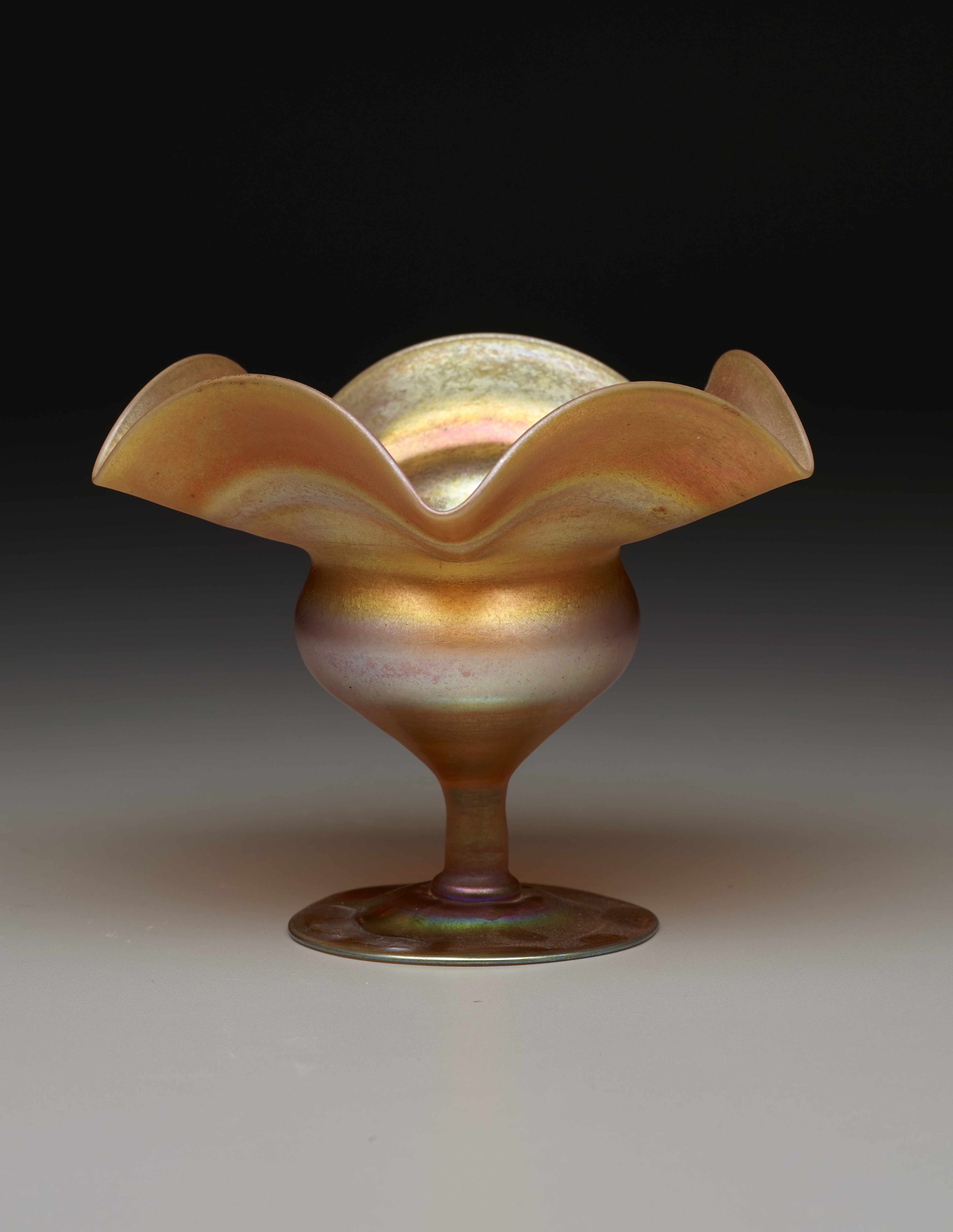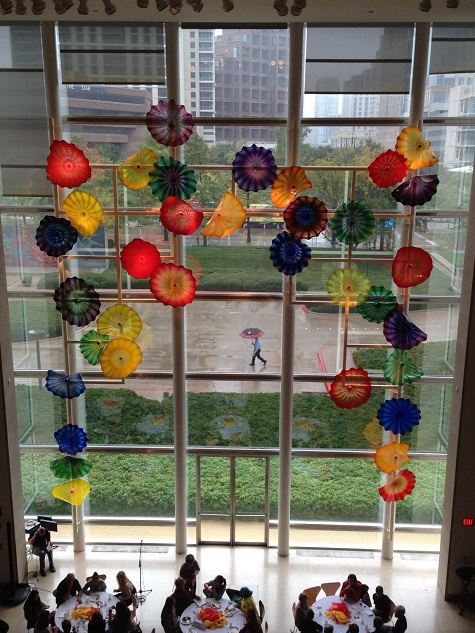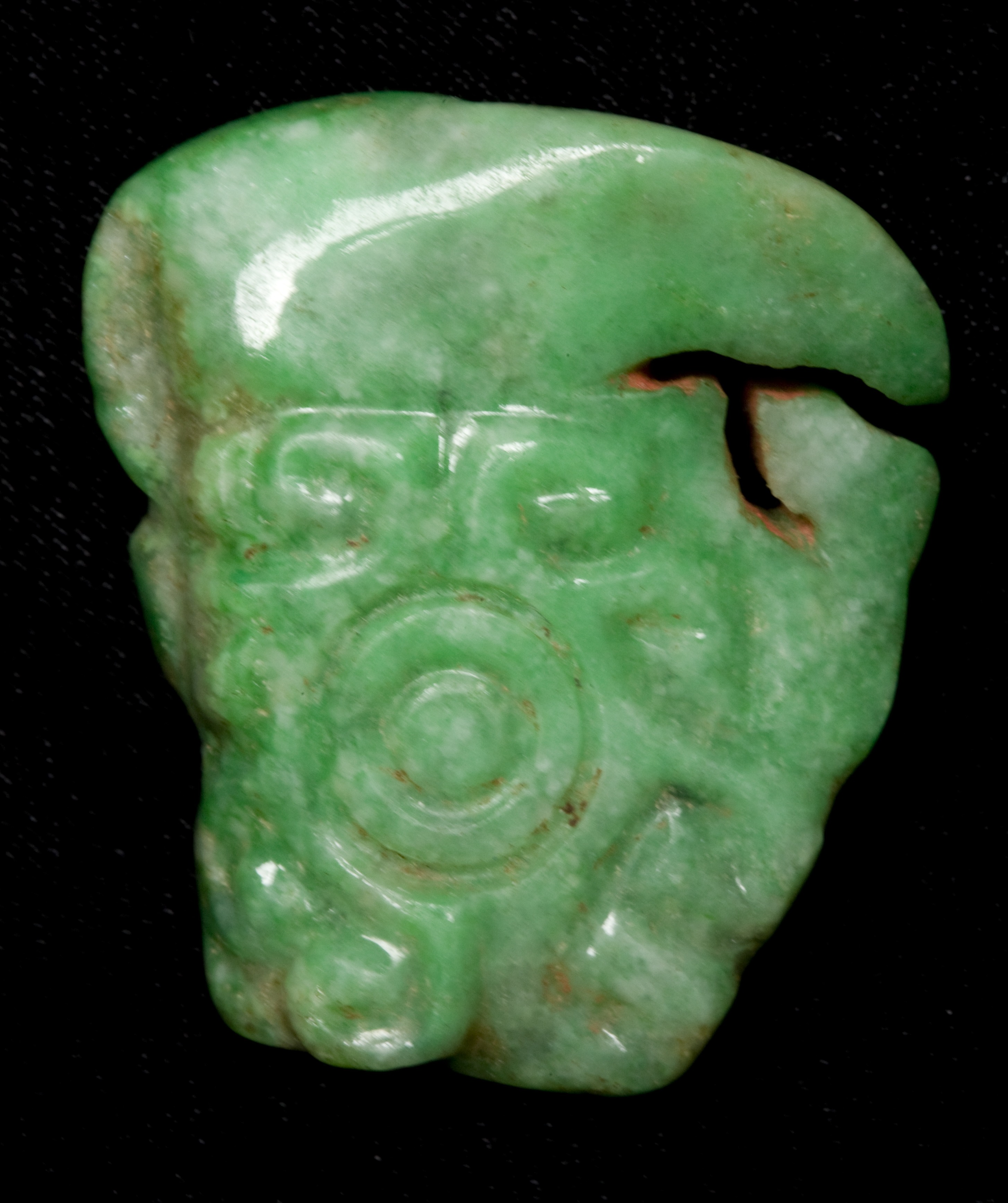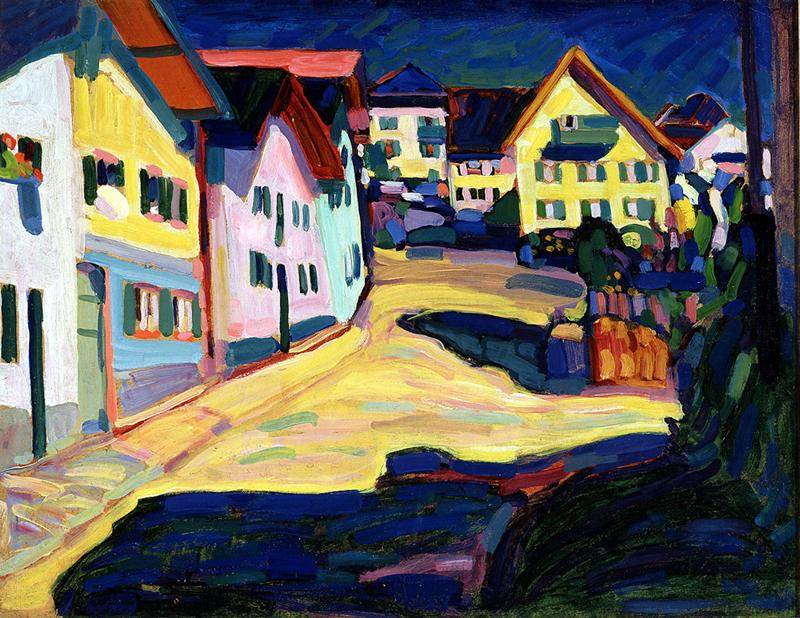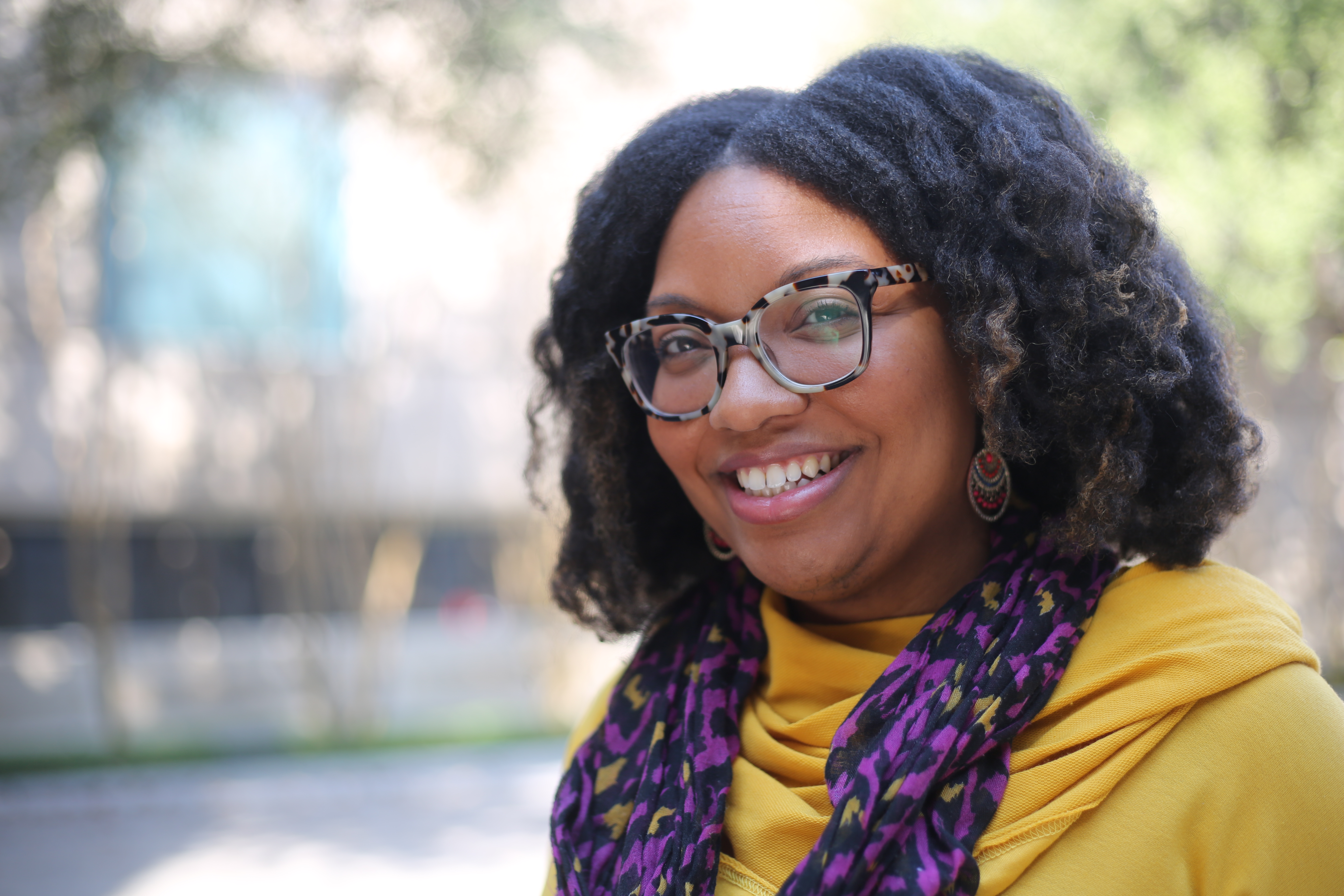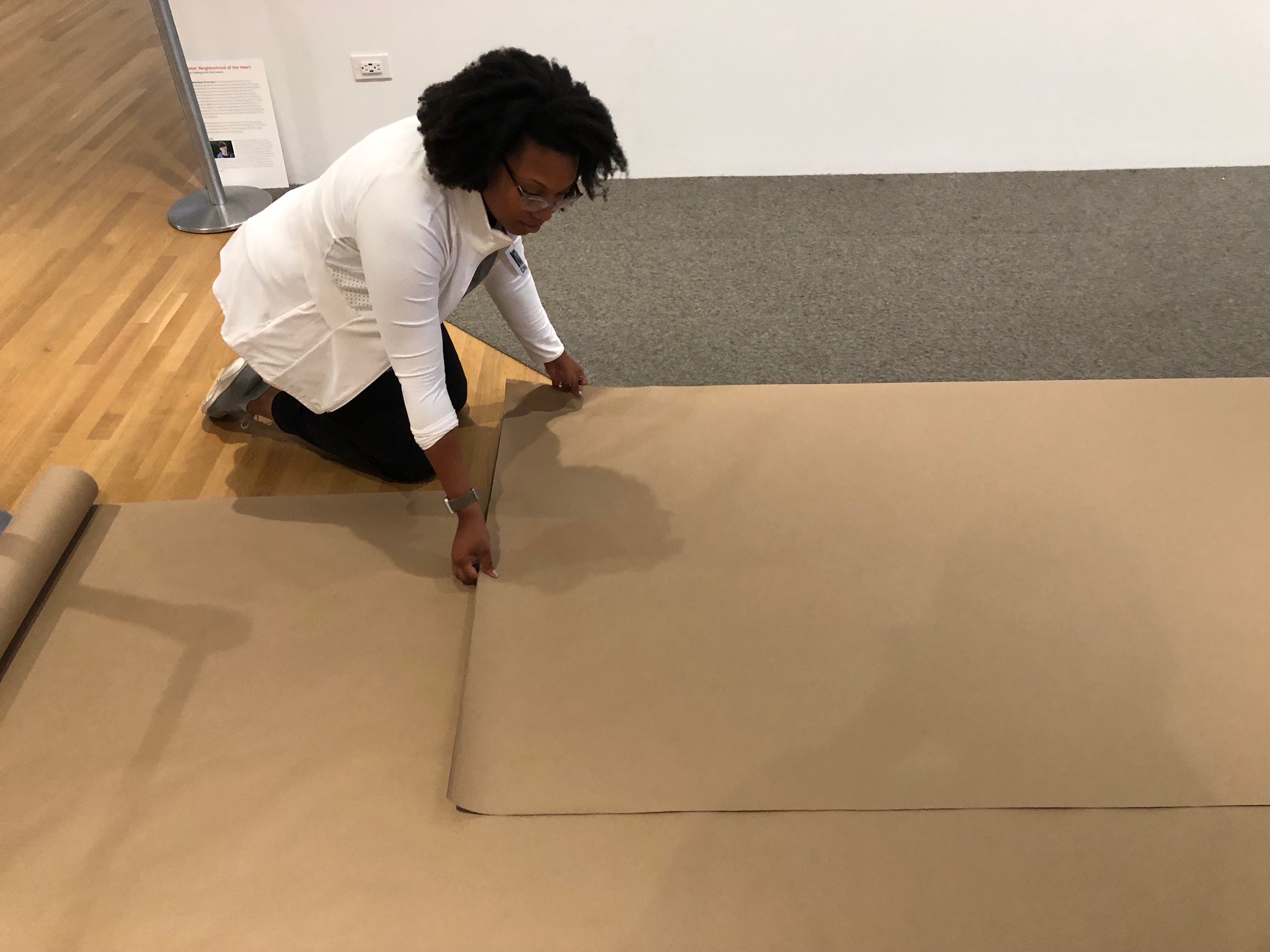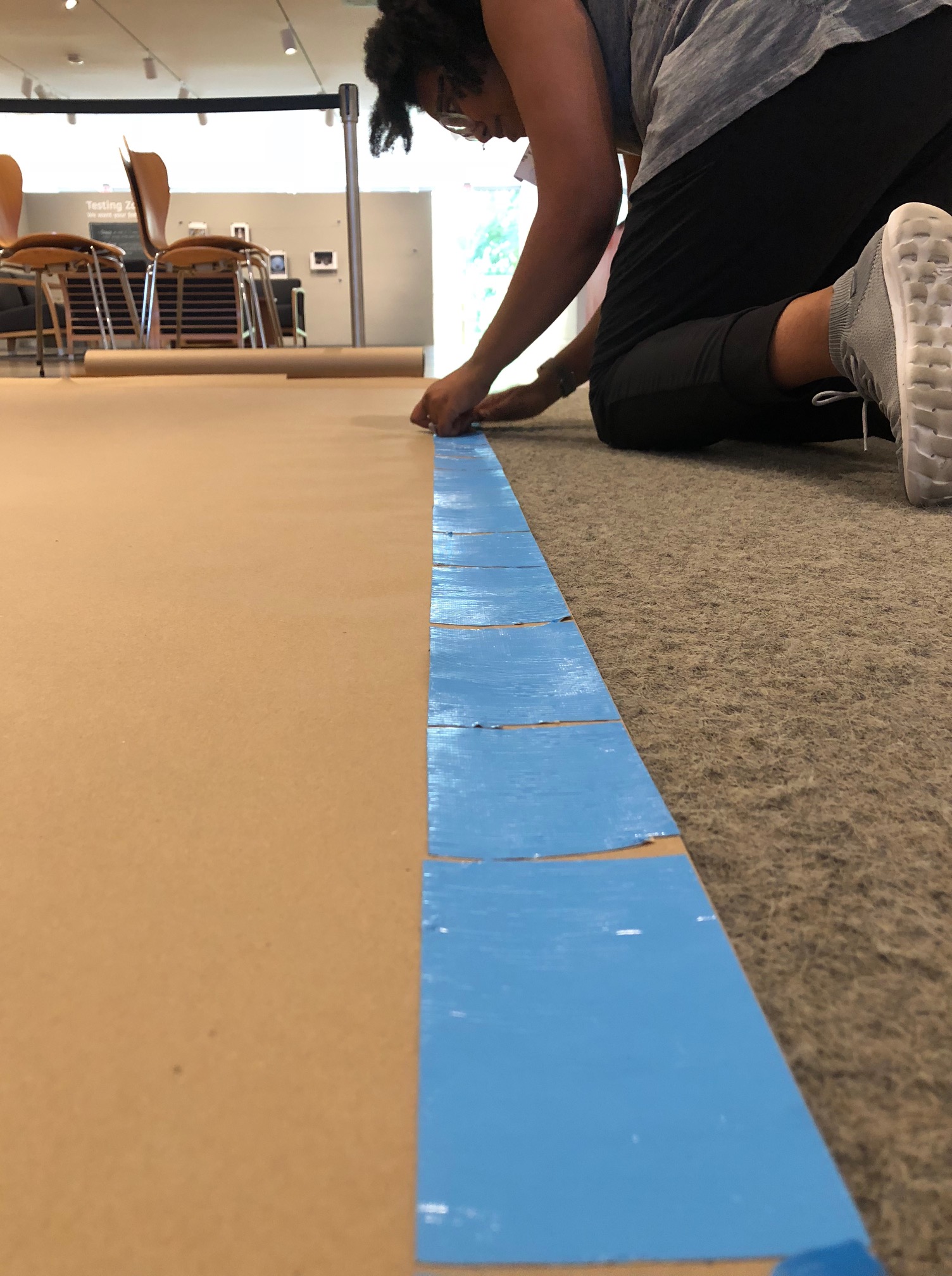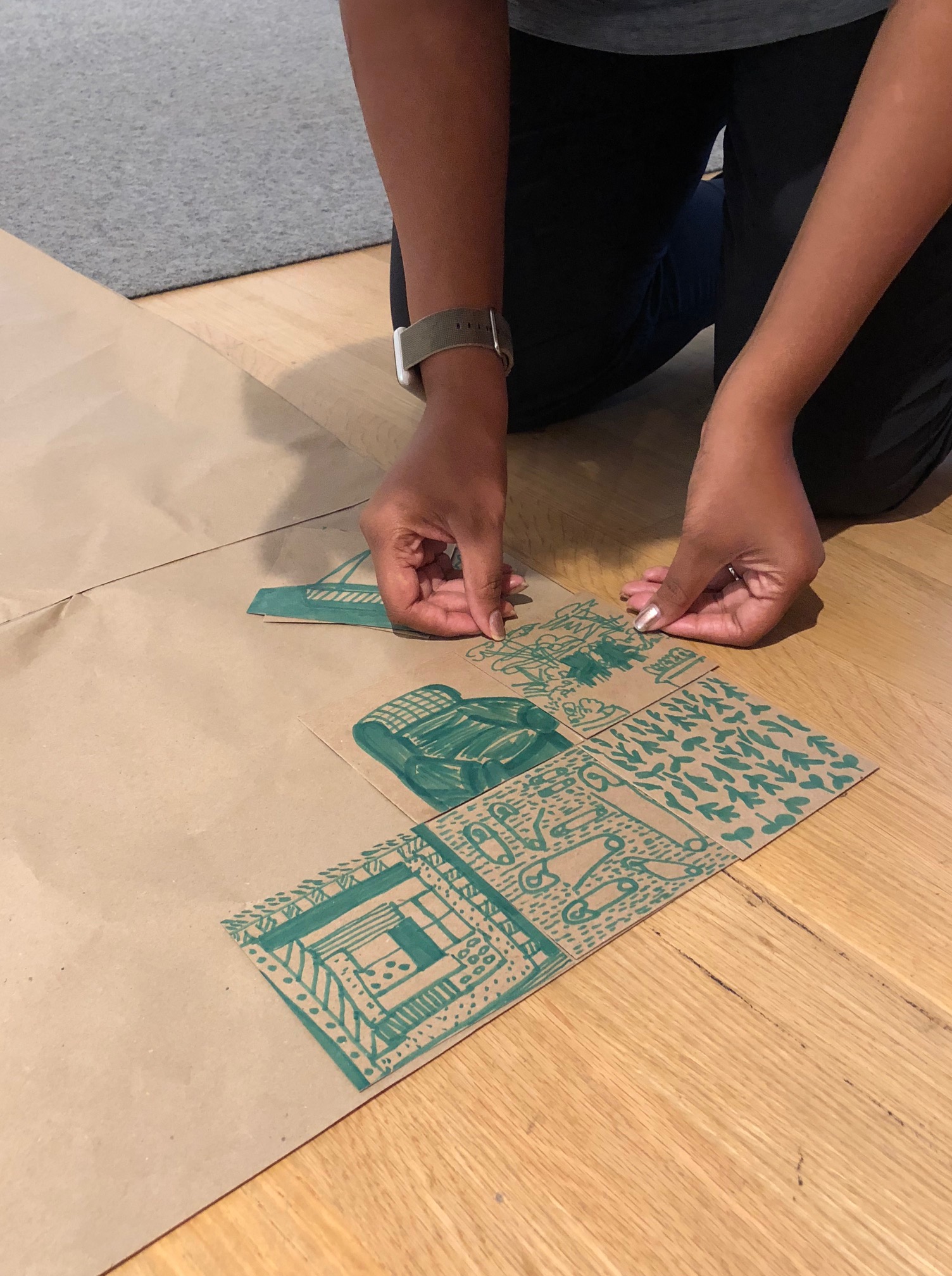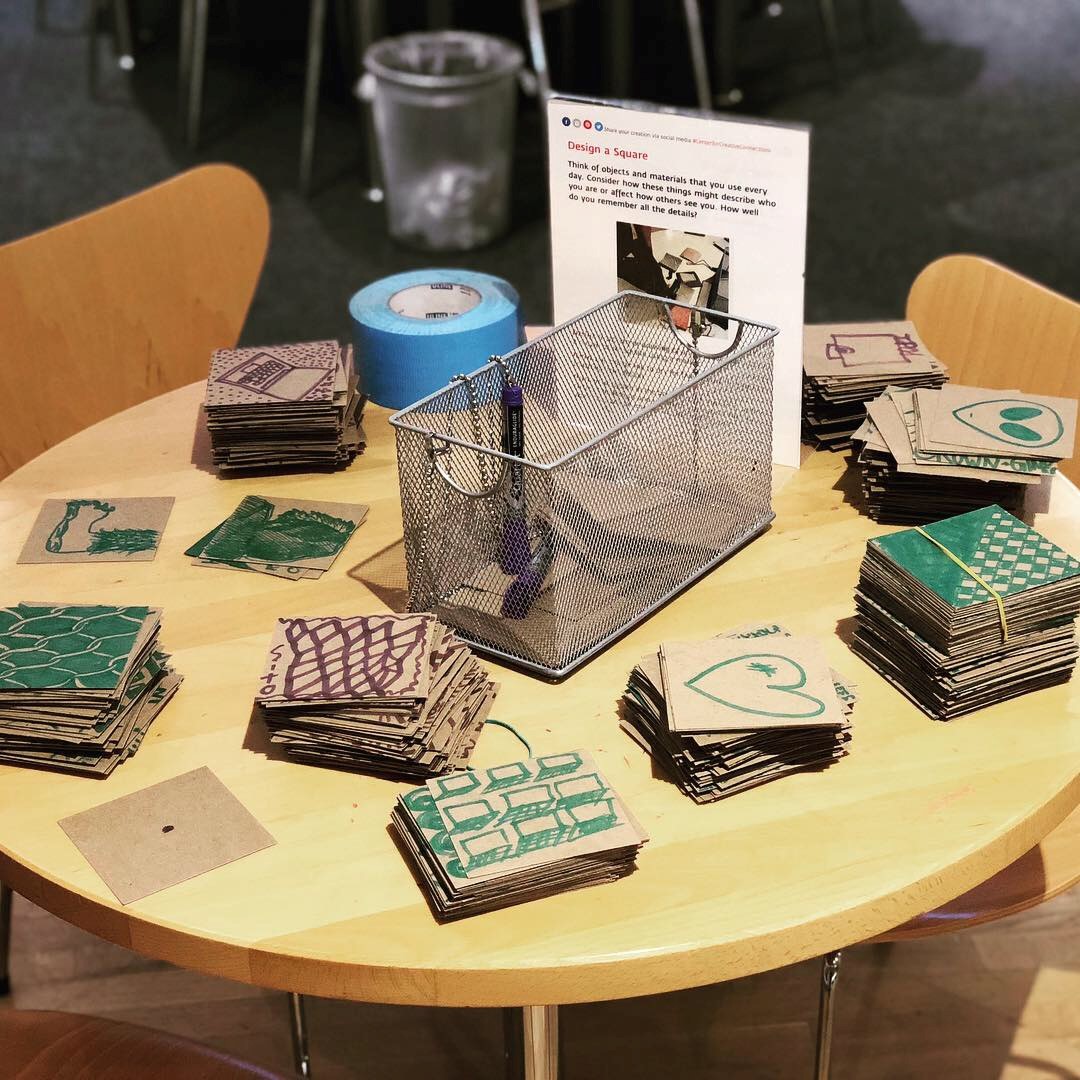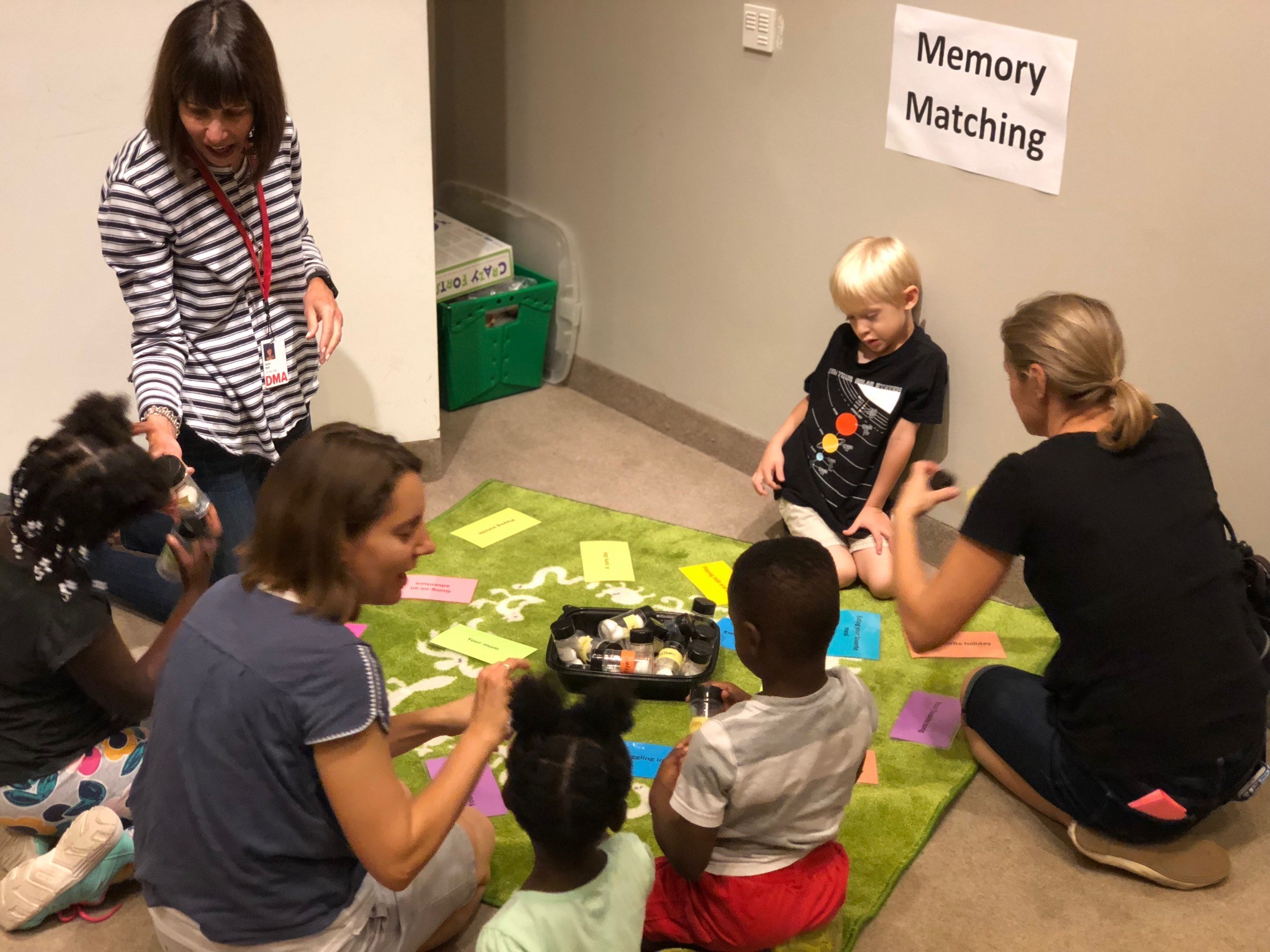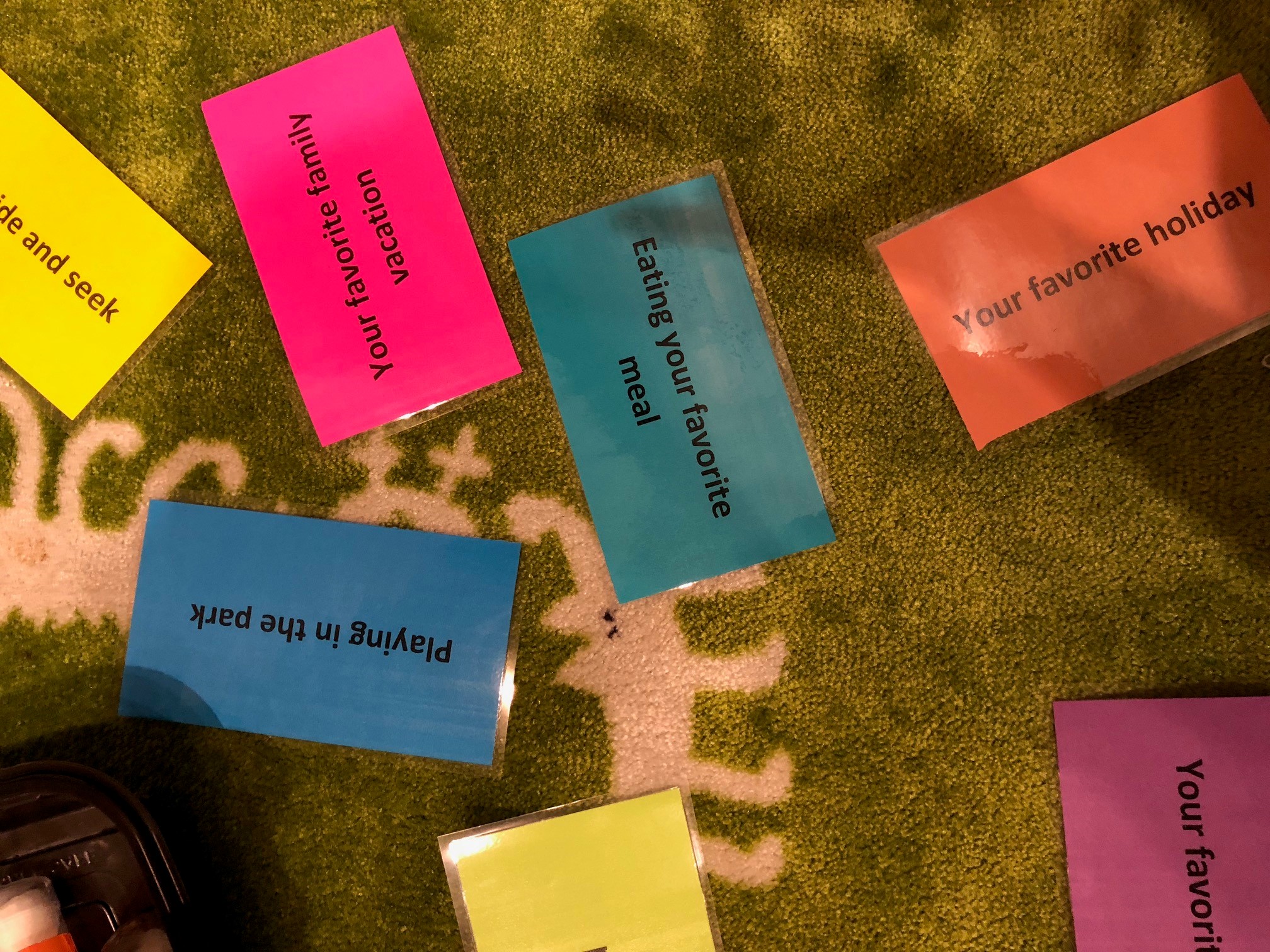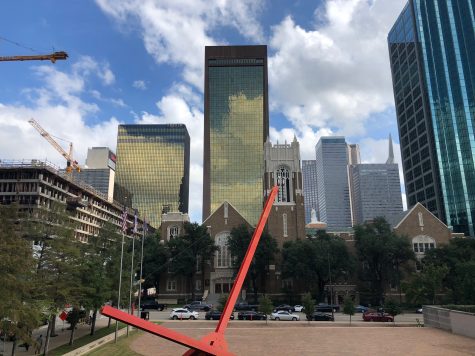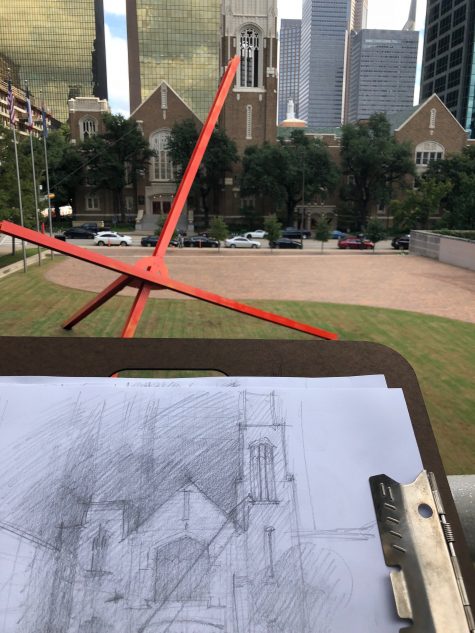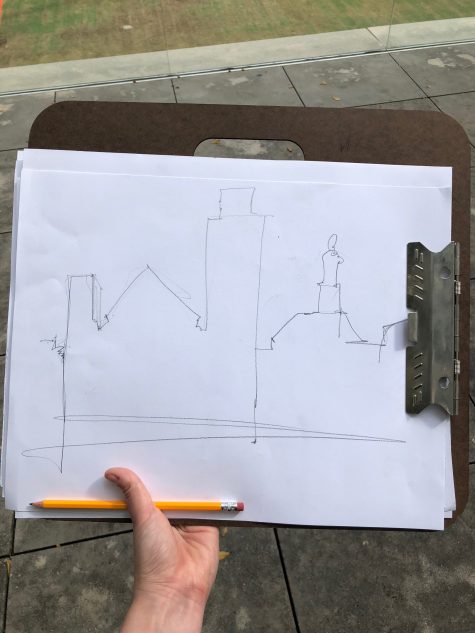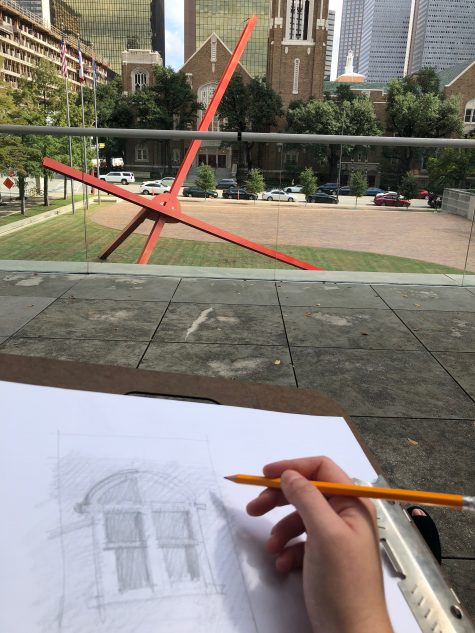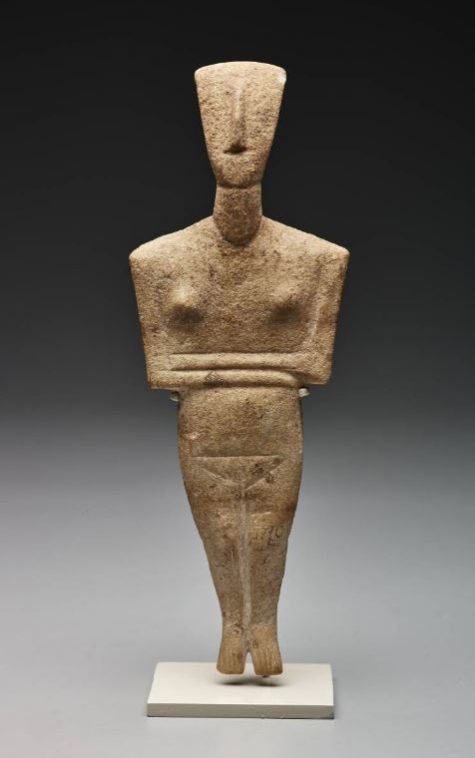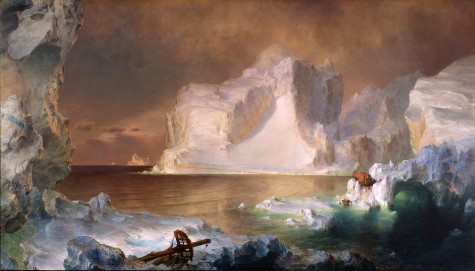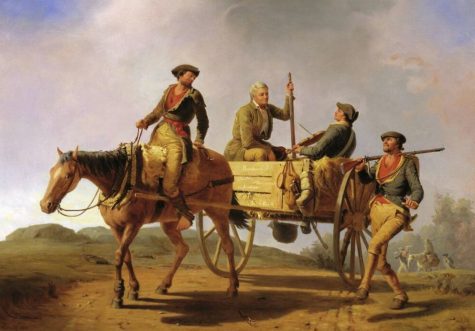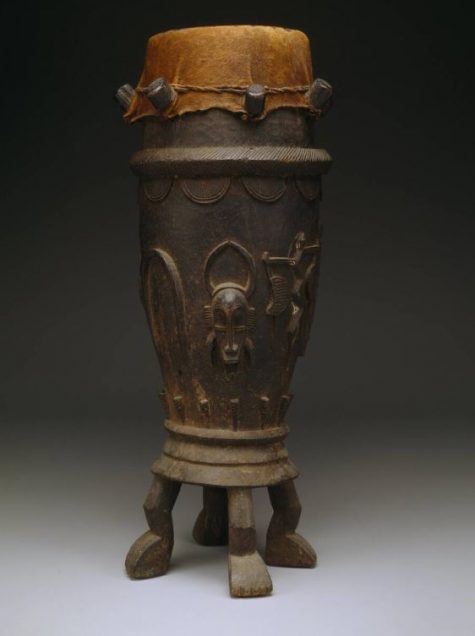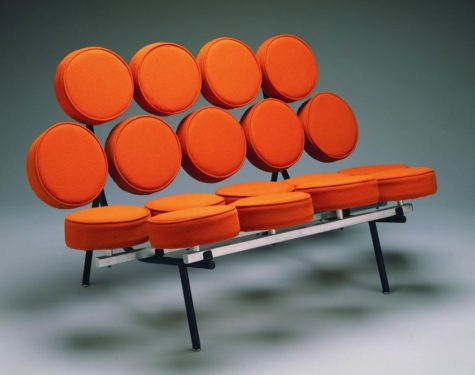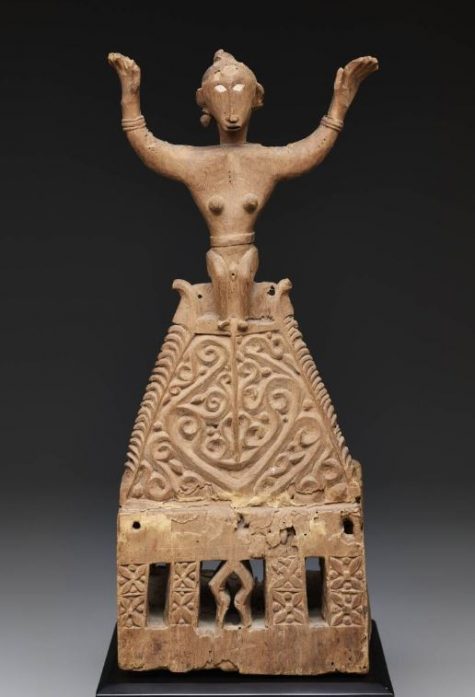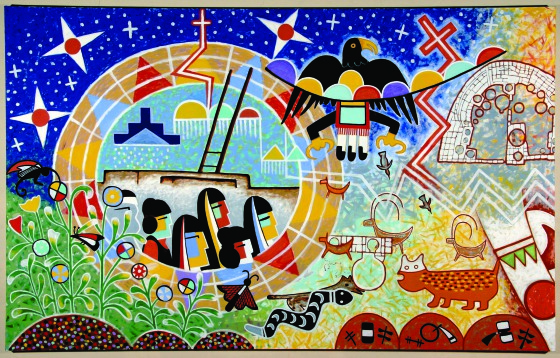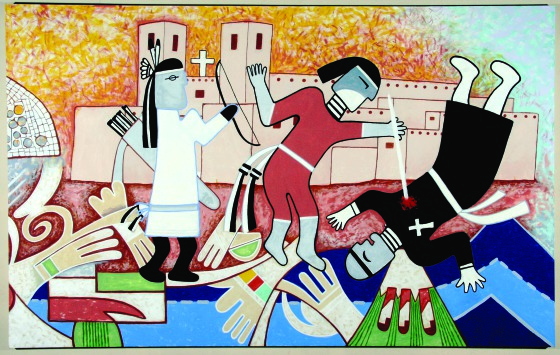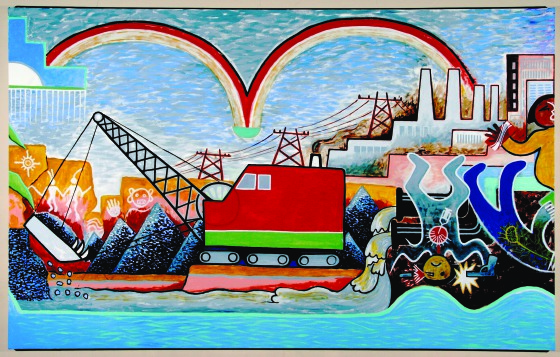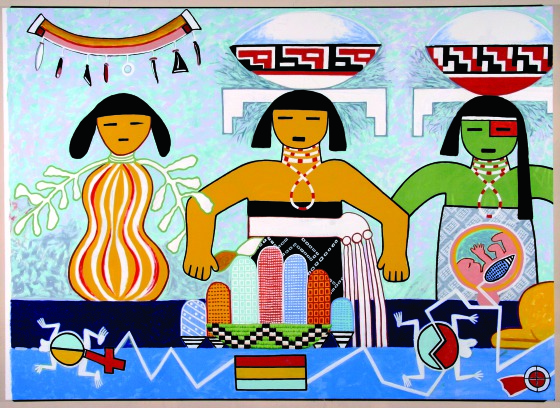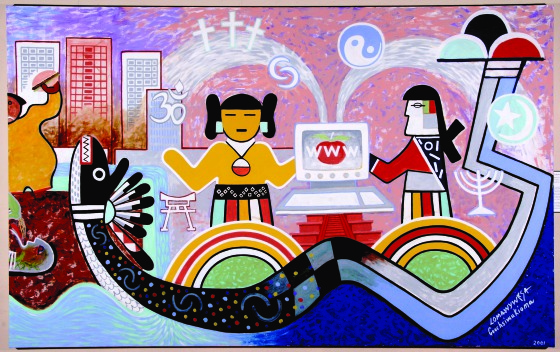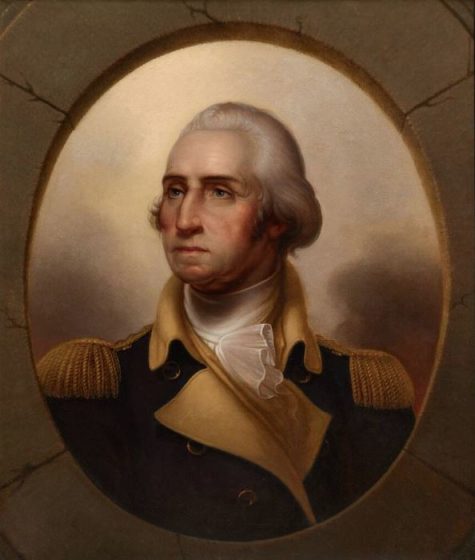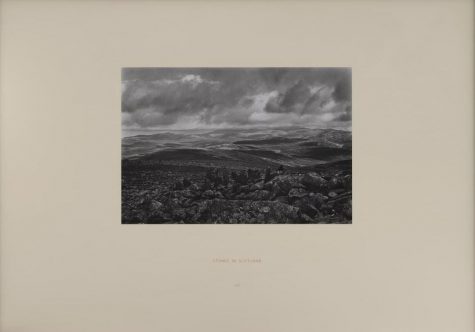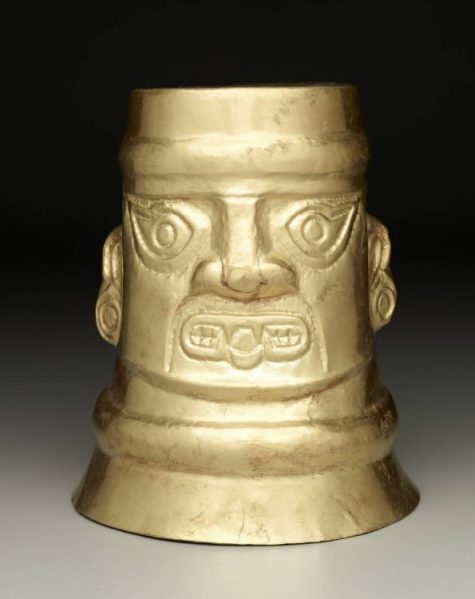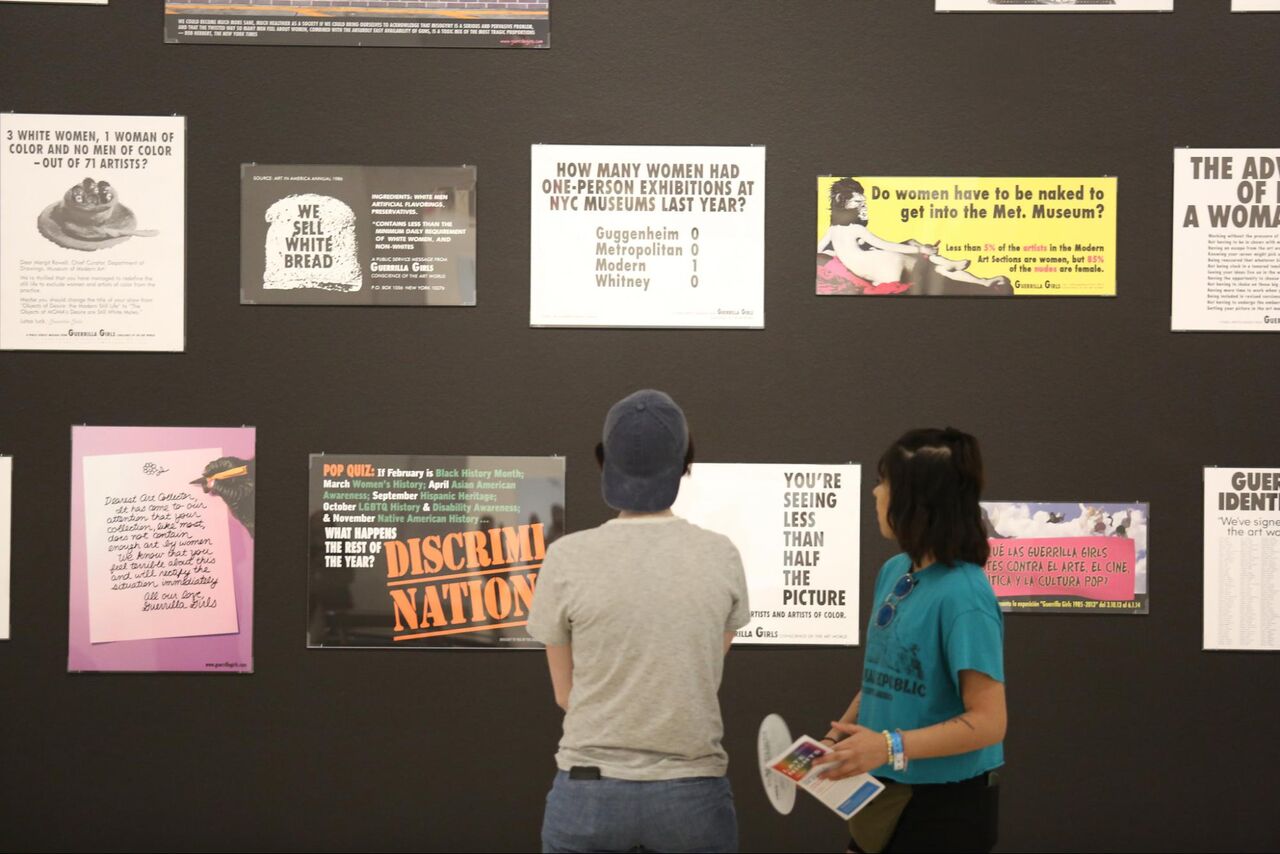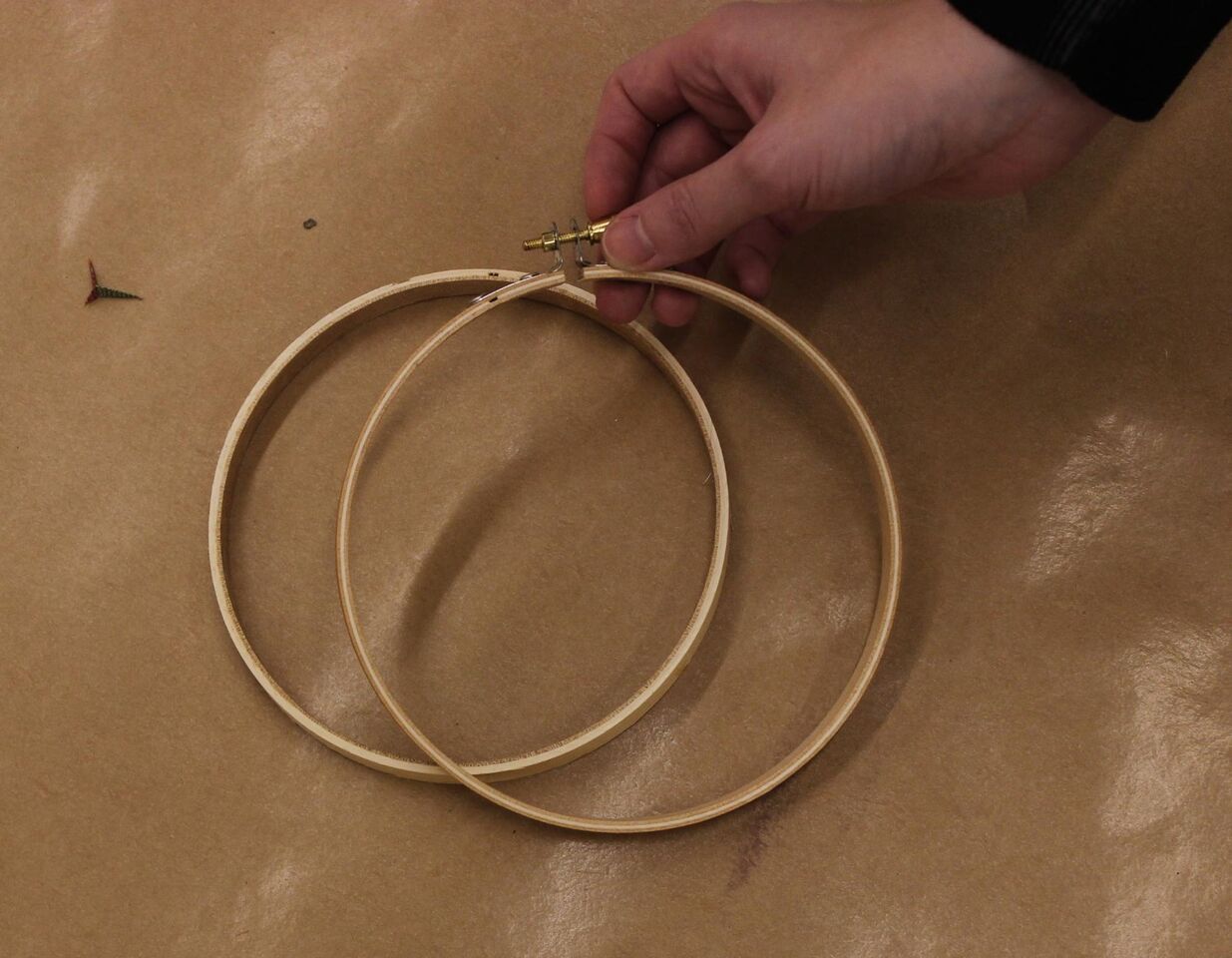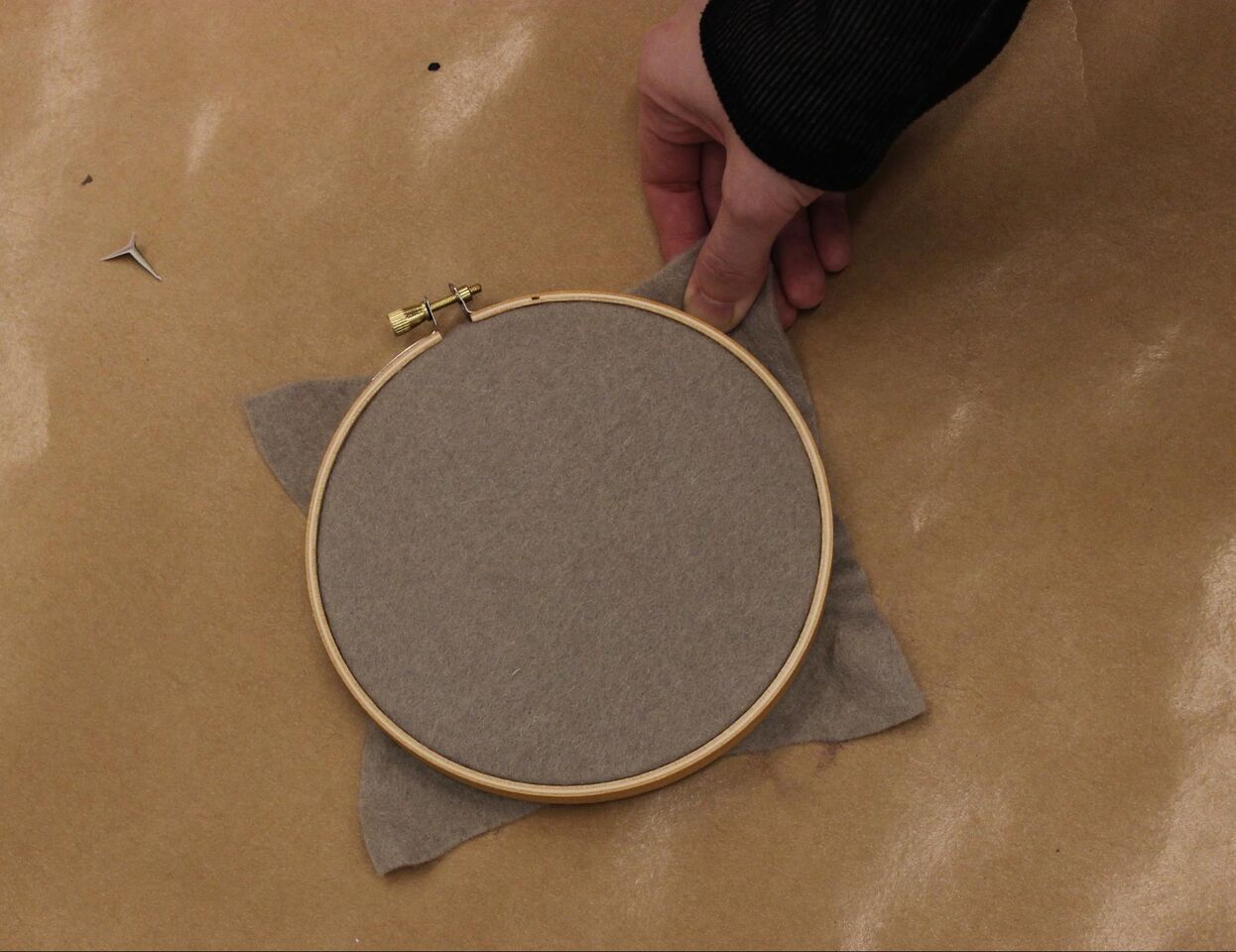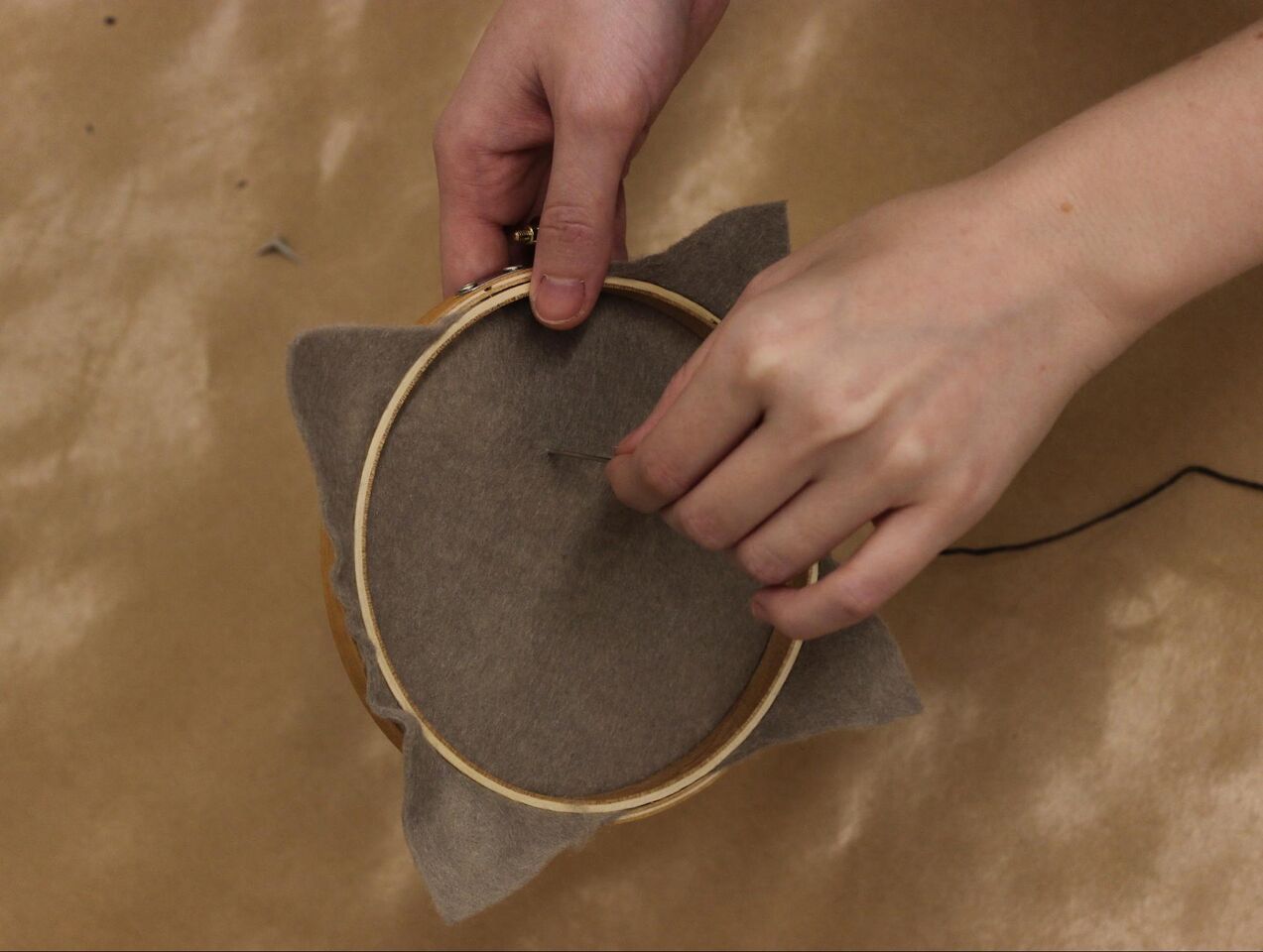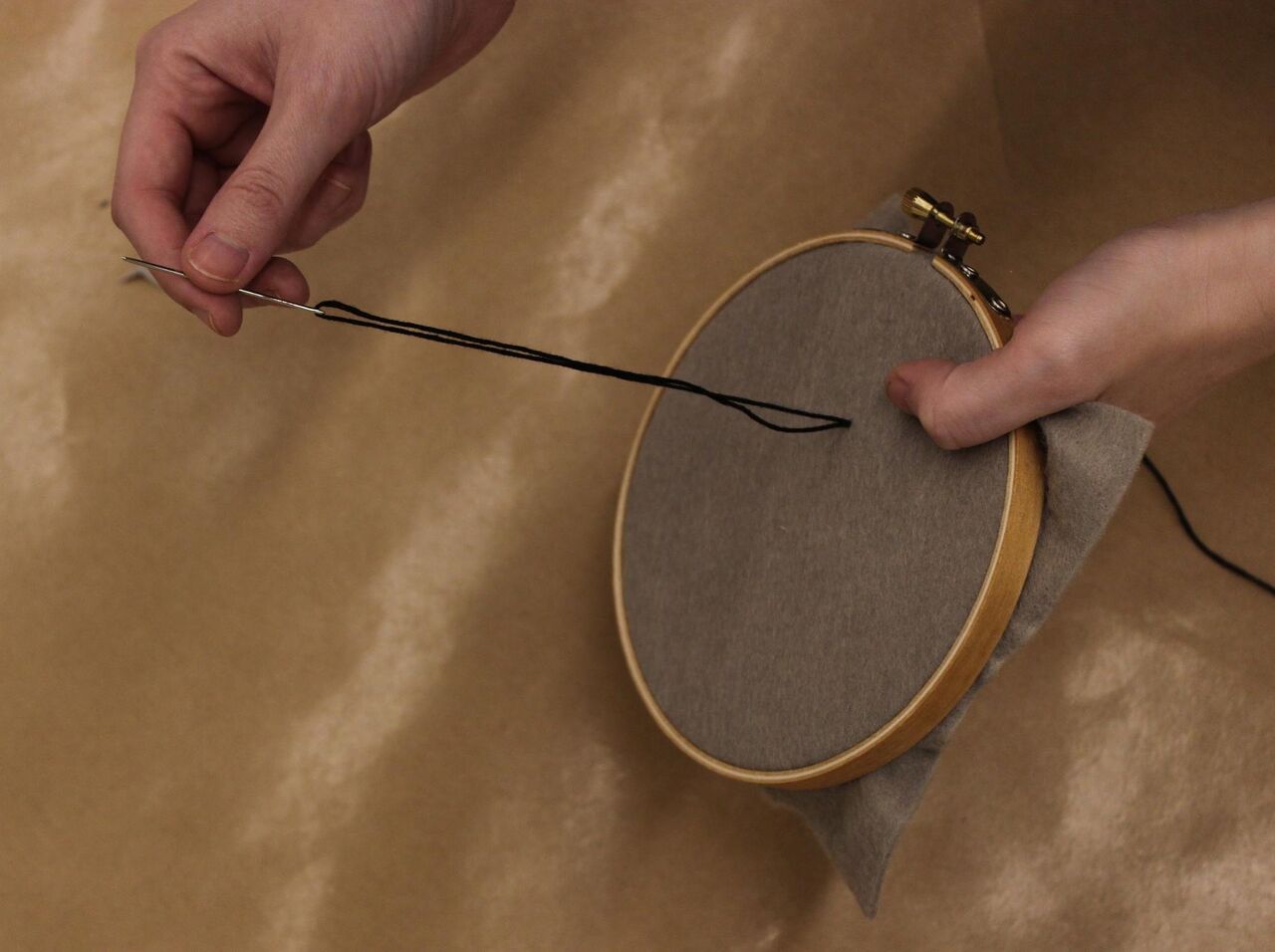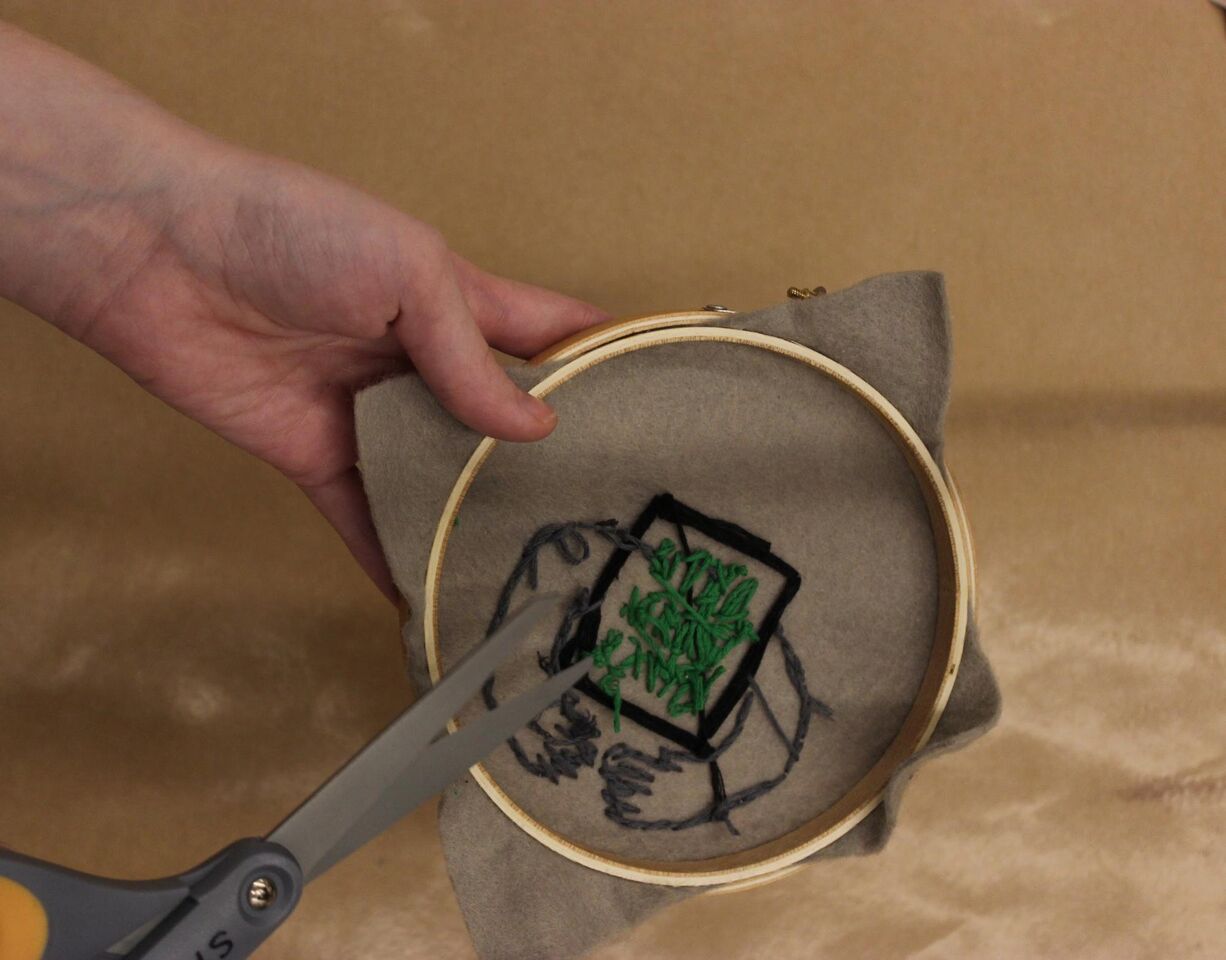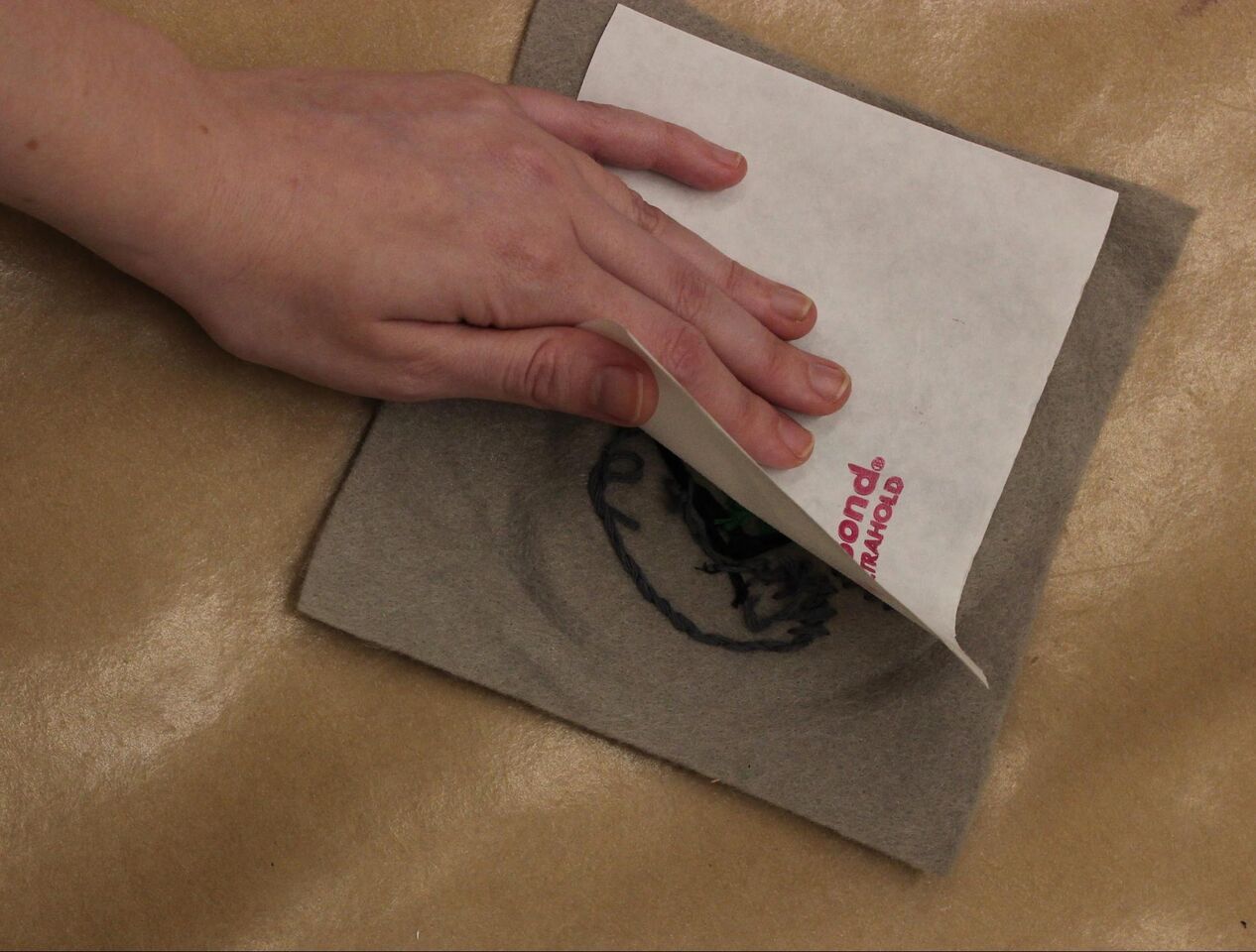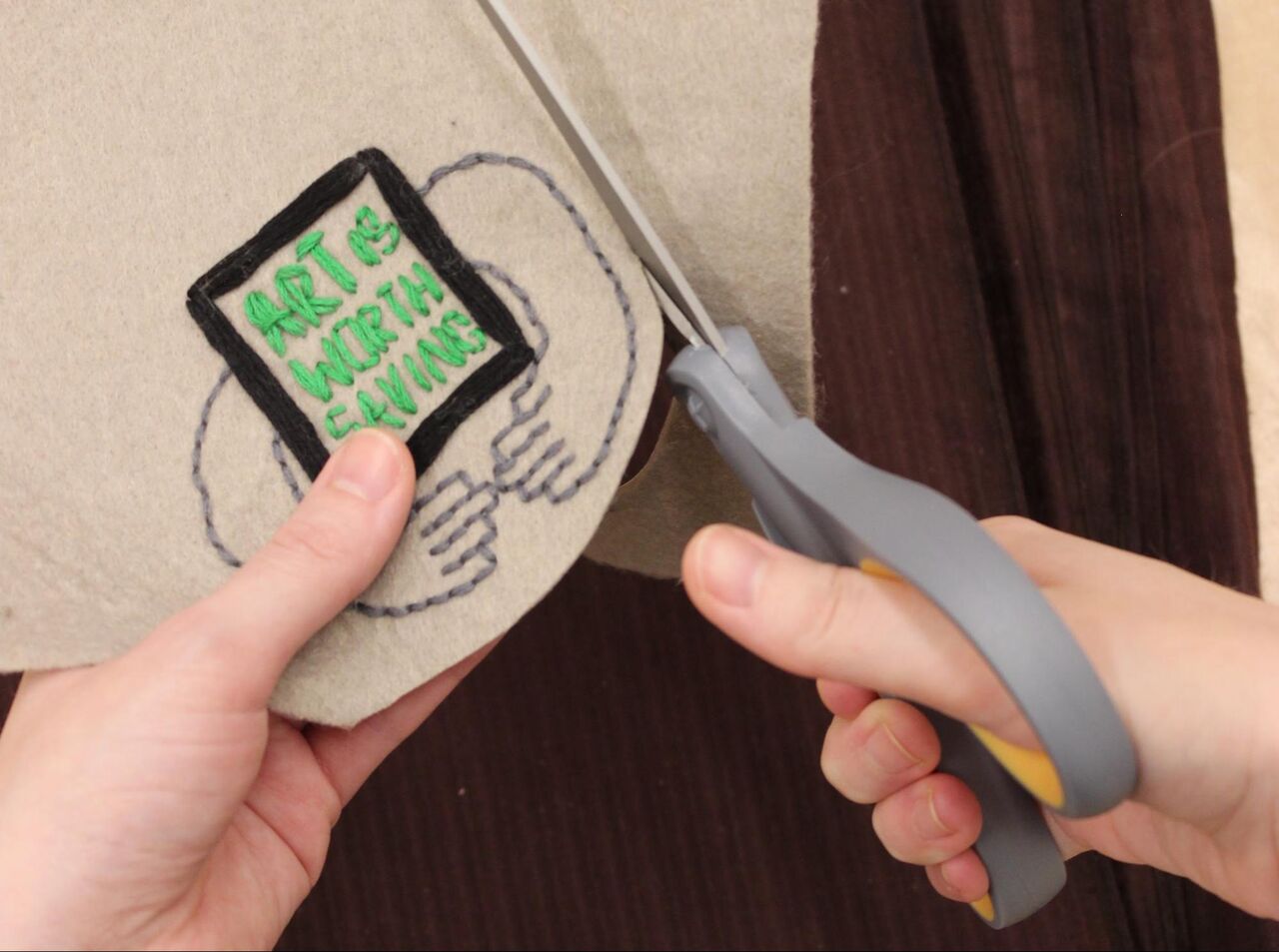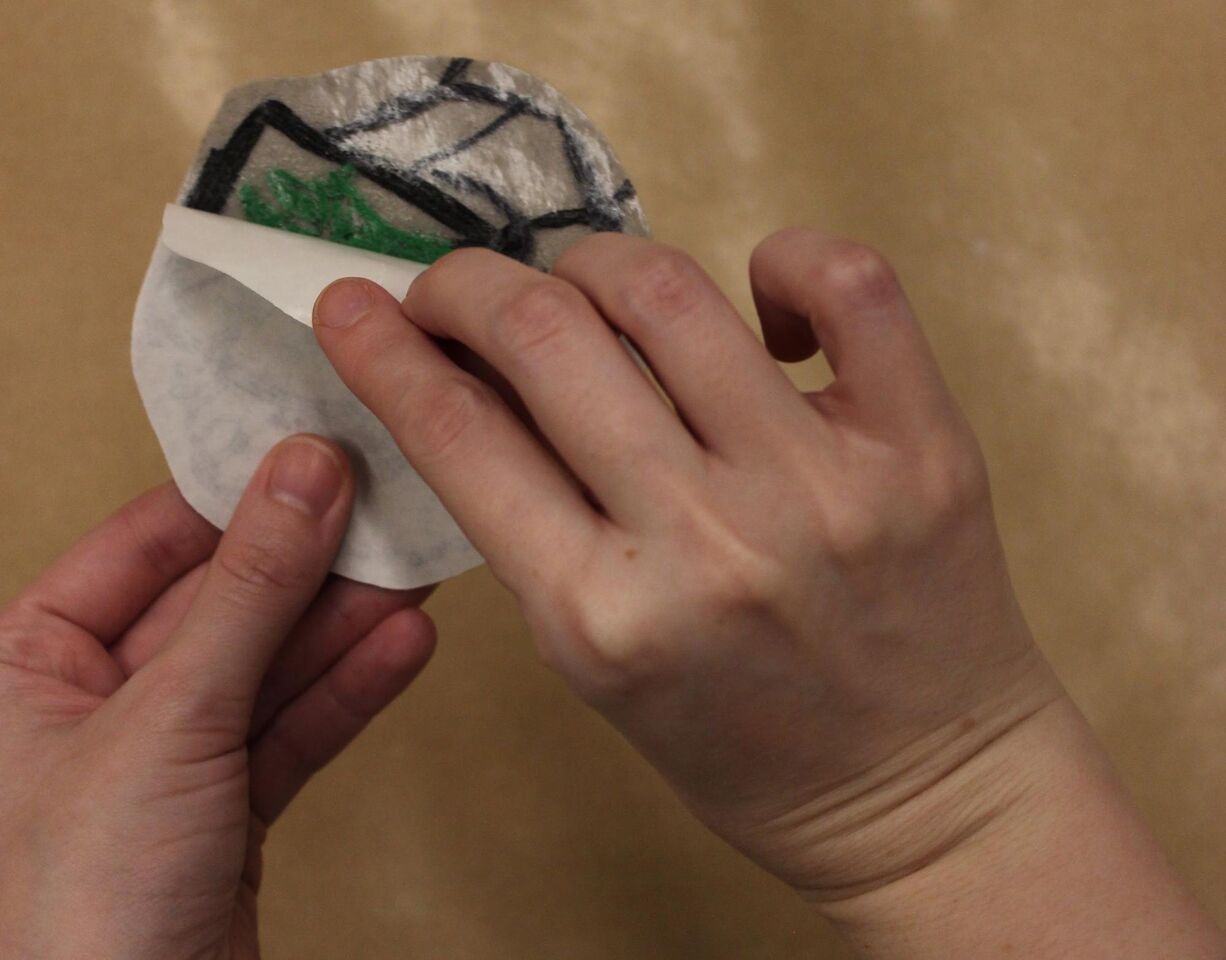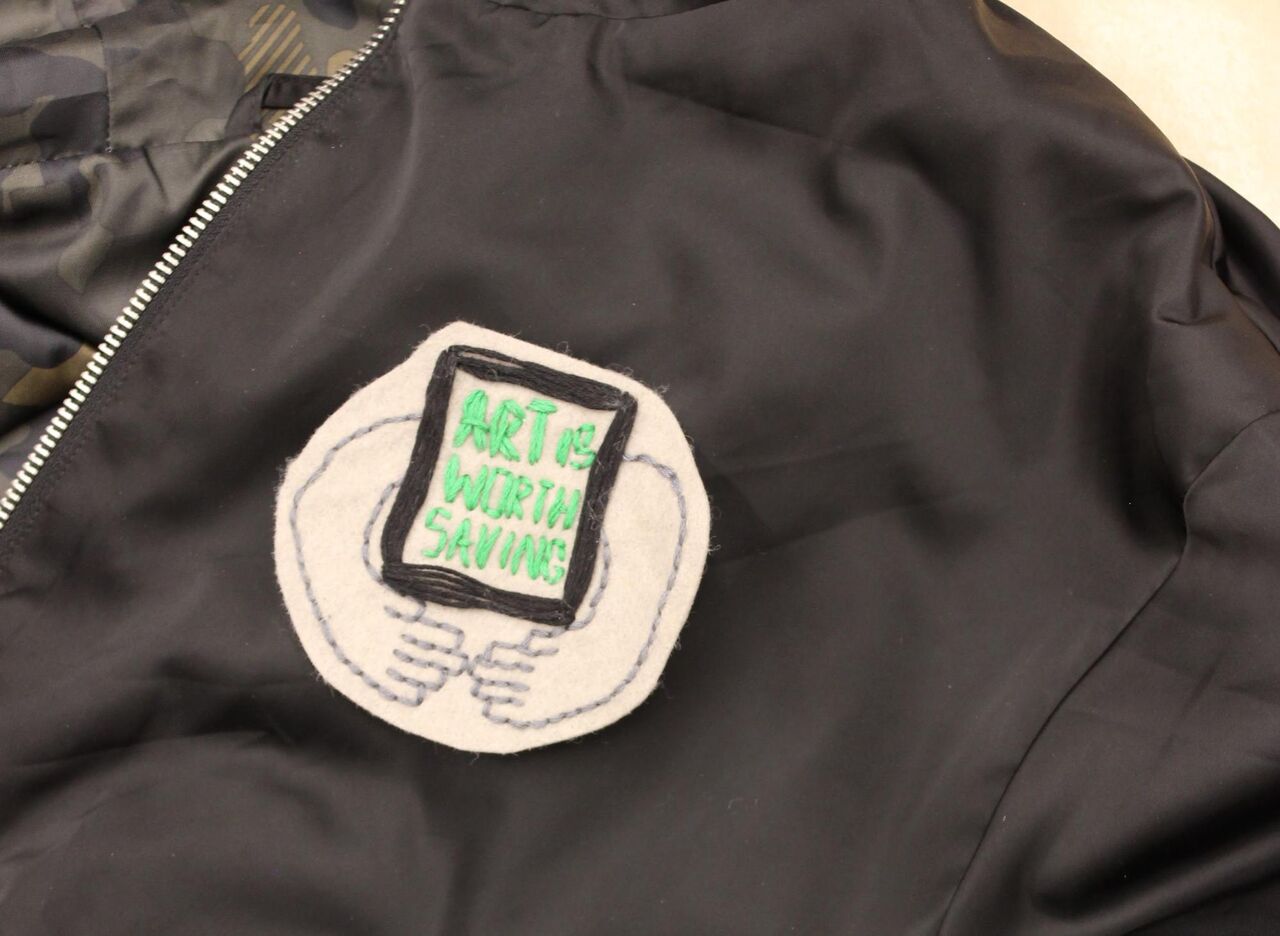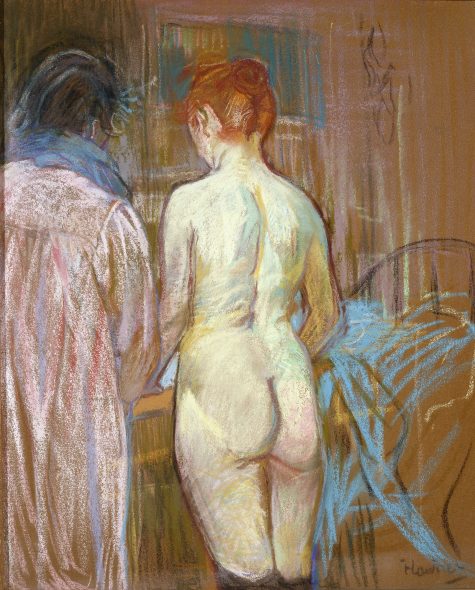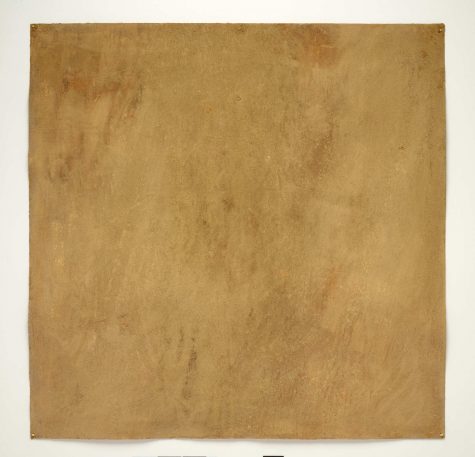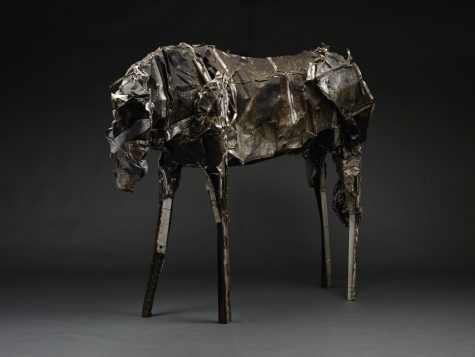Working in an exciting place like the Center for Creative Connections (C3), I get to have conversations with visitors about how works of art can conjure specific memories that we pack away in our brains. So in May, when C3 had the idea for an open call for DMA staff to submit their own personal objects and accessories to be on view in the gallery, it felt like discovering buried treasures. What began as an employee’s small, digitally submitted story evolved into a captivating display of objects on view, many with rich family histories.
Jessica Kyle, who has worked at the DMA as the Donor Communications & Operations Specialist since January 2018, submitted several childhood dresses handmade by her grandmother Betty Jo Kyle in 1994. Jessica’s family flew her grandmother in from California a few weeks ago and I was lucky enough to chat with them about the dress and the lasting influence it has had on Jessica throughout her life.

Betty Jo Kyle and granddaughter Jessica Kyle
Betty Jo, by practice, is a cross-stitcher. The oldest of eight siblings, she refined her sewing practice by creating doll clothes from scrap fabrics—a skill she learned from her mother, although she admits she didn’t reach her level of skill. “Even in high school, we had sewing, but it was all basics,” she recalls. “So, by me sewing, the teacher would say, ‘Well, you just do what you want to do.’ She didn’t teach me anything else. I could have learned more if she had. She mostly just taught the kids who couldn’t get a stitch or hem in.”
Initially, Betty Jo’s grandchildren were all boys, so it didn’t lend much for clothing creation, particularly dresses. It wasn’t until Jessica was born that she had the desire to make dresses she would see in magazines. She even often made matching dresses for Jessica’s Barbie dolls. “I remember receiving the clothes that my grandma would make, and I would be so excited. I would be like, ‘Ooh, I have custom-made clothes in my closet!’ Even as a four year old, I can remember that.” Jessica says with a smile. “It’s funny, when you’re younger, you don’t realize how meaningful and important these types of things are to the family legacy. When you become an adult you really appreciate all these creations.”
These days, with her grandchildren grown up, Betty Jo focuses more on cross-stitching than dressmaking, but she still hangs on to her now-vintage sewing machine of decades past—an artwork in itself, as Jessica puts it. For Jessica, the summers she spent learning to cross-stitch with her grandmother in Compton, California, were transformative in how she sees herself as an artist and painter today. “It showed me that if you put the time in, and care for all those little details, you create a true work of art. It taught me to appreciate the whole process.”
See Jessica’s childhood dress and learn about other personal objects and accessories from DMA staff and the Museum’s collection on view until December 10 in the front gallery of the Center for Creative Connections.
Kerry Butcher is the Center for Creative Connections Education Coordinator at the DMA.
